火星 ALPO-Japan Latest

Mars Image 2018/07/12(UT)
大田 聡,熊森照明
Luis Amiama Gomez,Anthony Wesley,Clyde Foster,Christophe Pellier,Dzmitry G.Kananovich,David Arditti,Efrain Morales Rivera
L.Amiama,S.Ota,Anthony.W,C.Foster,T.Kumamori,Christophe.P,D.G.Kananovich,D.Arditti,E.Morales
解説(安達)/ Comment by Makoto Adachi
SPCが晴れている部分は、前日と同じでNoachisの南側だが、Aoniusの北側が新たに見えるようになった。これは前日まで
Aoniusへの冷気の吹き出しが起こり、そのあとにできた晴れ間だと思われる。その結果Aonius付近のダストストームは顕著に
なった。その様子はAnthony Wesley氏が画像によく記録している。
南半球のダストストームはMare Sirenumで衰えた。Marinerisの西の端の南側に小さなダストストームが発生した。Daedaliaの
大きな暗斑の様子がAnthony Wesley氏の画像ではっきりした。とても大きな変化だ。この部分は海老沢マップにも破線で記録され
ているが、模様の変化のよく見られるところだ。おそらく6月25日ごろに起こった、激しいダストストームの風によって、表面の砂
が運ばれて出てきたものと思われる。
The part where the SPC is sunny is the same as the day before but it is on the south side of the Noachis, but the north side of Aonius
has become newly visible. This is due to a cold air balloon to Aonius until the day before, it seems to be a fine sunset after that. As a result,
the dust storm near Aonius became prominent. The situation is well documented by Anthony Wesley in the image.
The dust storm in the Southern Hemisphere declined at Mare Sirenum. A small dust storm occurred on the south side of
the western end of Marineris. The state of the big dark spot of Daedalia was clear in the image of Anthony Wesley. It is a very
big change. This part is also recorded in the Ebisawa map by the broken line, but it is a place where the change of the pattern
is often seen. Perhaps it is believed that the sand of the surface was carried by the wind of a fierce dust storm that occurred around June 25.
(by 9 observations ;reported by Makoto Adachi)
-------------------------------------------------------------------------------------
seeing: 4/5 trans:4/5,The capture was under good seeing conditions.
 [Luis Amiama Gomez : [Santo Domingo,Dominican Republic]
[Luis Amiama Gomez : [Santo Domingo,Dominican Republic]
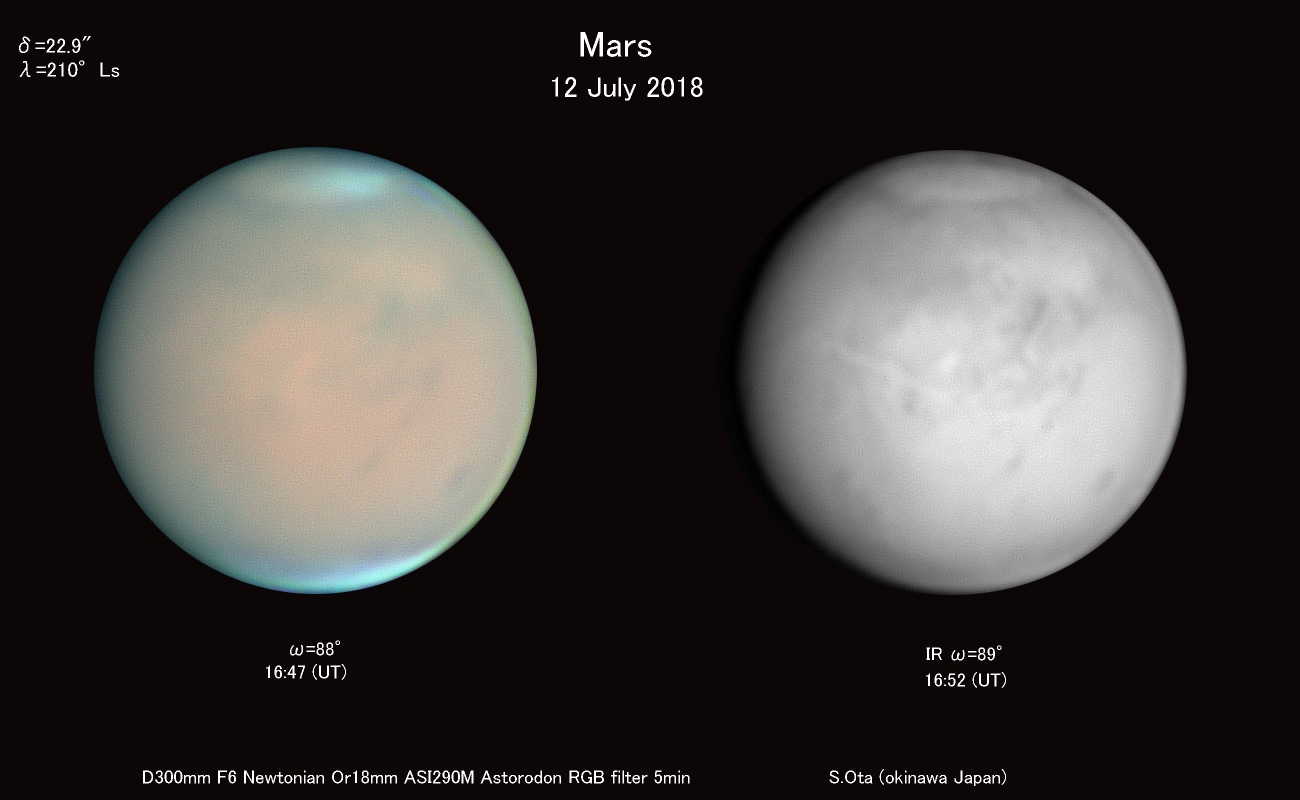 [Tomigusuku city Okinawa Japan]
≪沖縄県 豊見城市 大田 聡≫
[Tomigusuku city Okinawa Japan]
≪沖縄県 豊見城市 大田 聡≫
here's a composite image of Mars from this morning in reasonable seeing.
Left image is true colour and right image is IR750 which shows a little more detail.
Olympus Mons can be seen rising at top left,the three Tharsis volcanoes are visible below and to it's right.
Valles Marineris is the bright horizontal feature near centre,although it should look very different to this.
The south polar cap at bottom has a thick covering of dust apart from one small region on it's left.
Some cloud is visible near the north pole at top although the pole itself is over the limb and not visible.
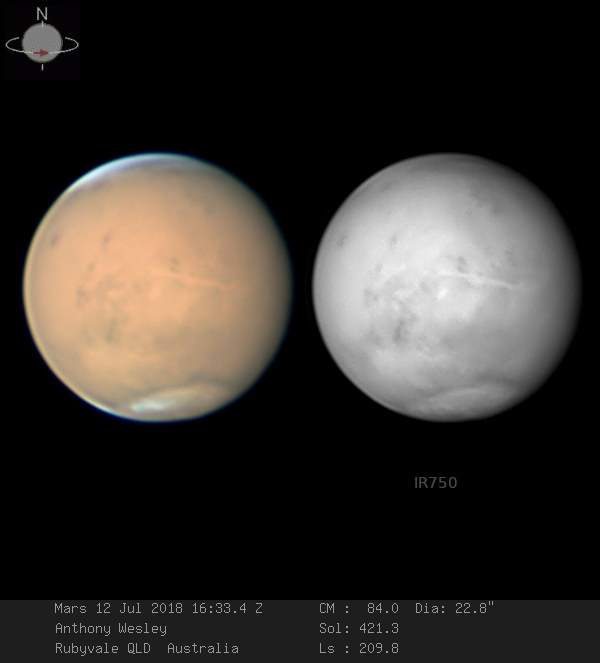 [Anthony Wesley,Murrumbateman Australia]
≪アンソニ オーストラリア≫
[Anthony Wesley,Murrumbateman Australia]
≪アンソニ オーストラリア≫
An image set from earlier last night. I only captured one set of data and conditions were rather poor.
Olympus Mons is very prominent,and the three Tharsis volcanoes are also visible.
The bright regions in IR and R at high southern latitudes make me suspect that there is still active dust storms in these regions.
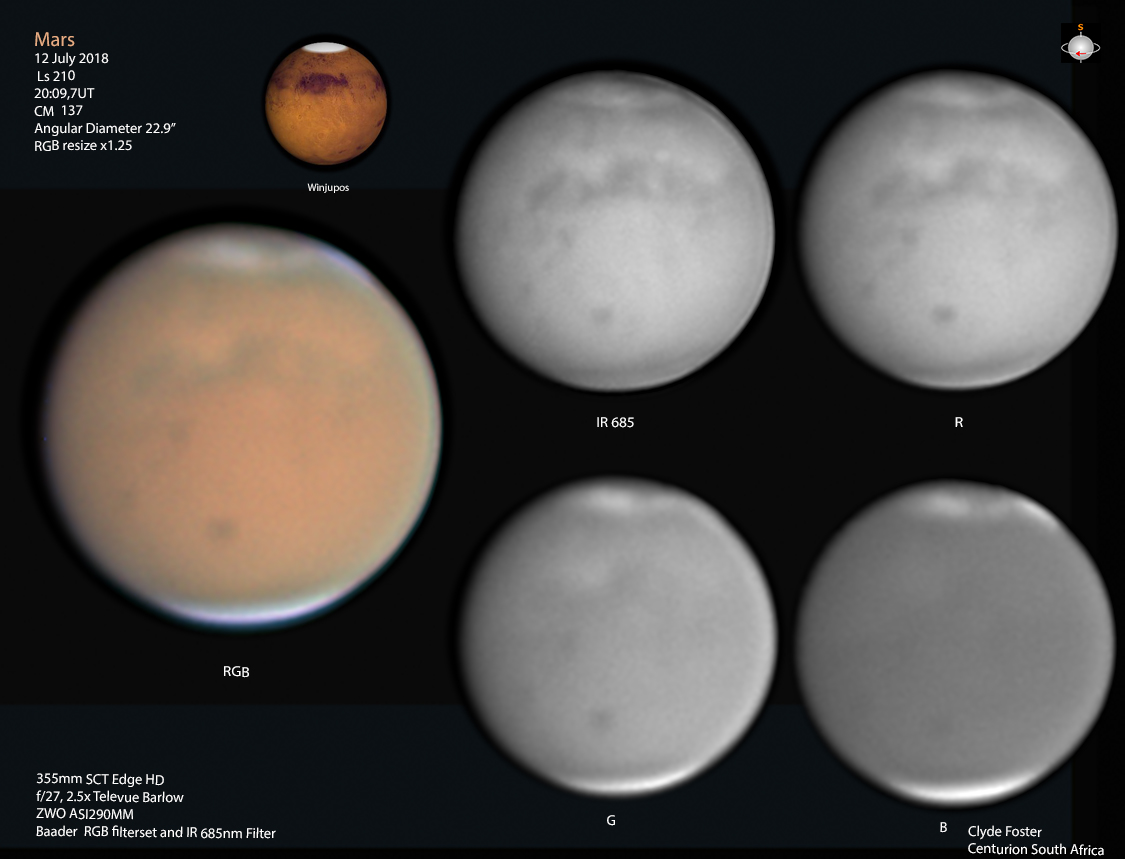 [Clyde Foster:Centurion,South Africa]
[Clyde Foster:Centurion,South Africa]
沖縄はなかなか快晴にはならず雲がよく通過します。
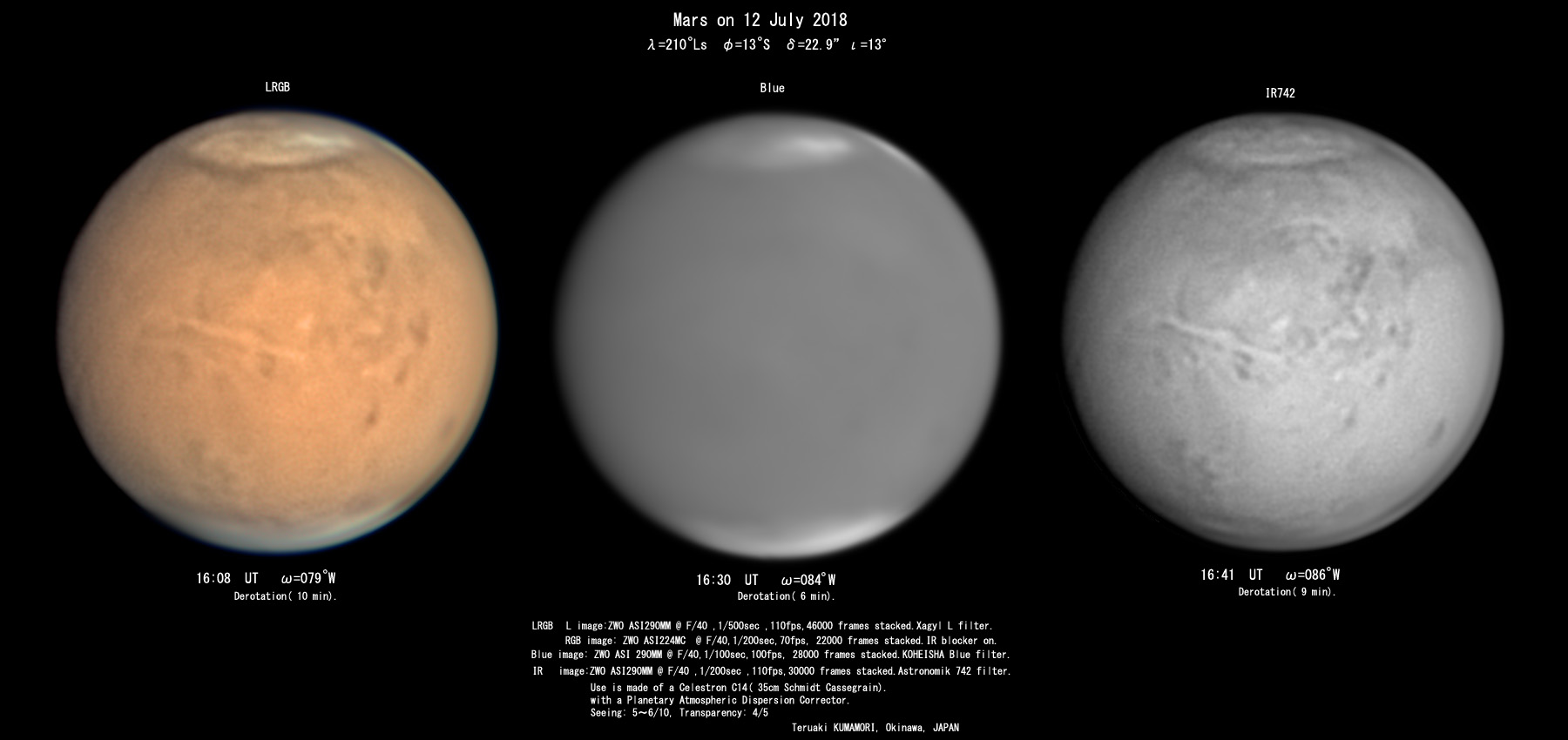
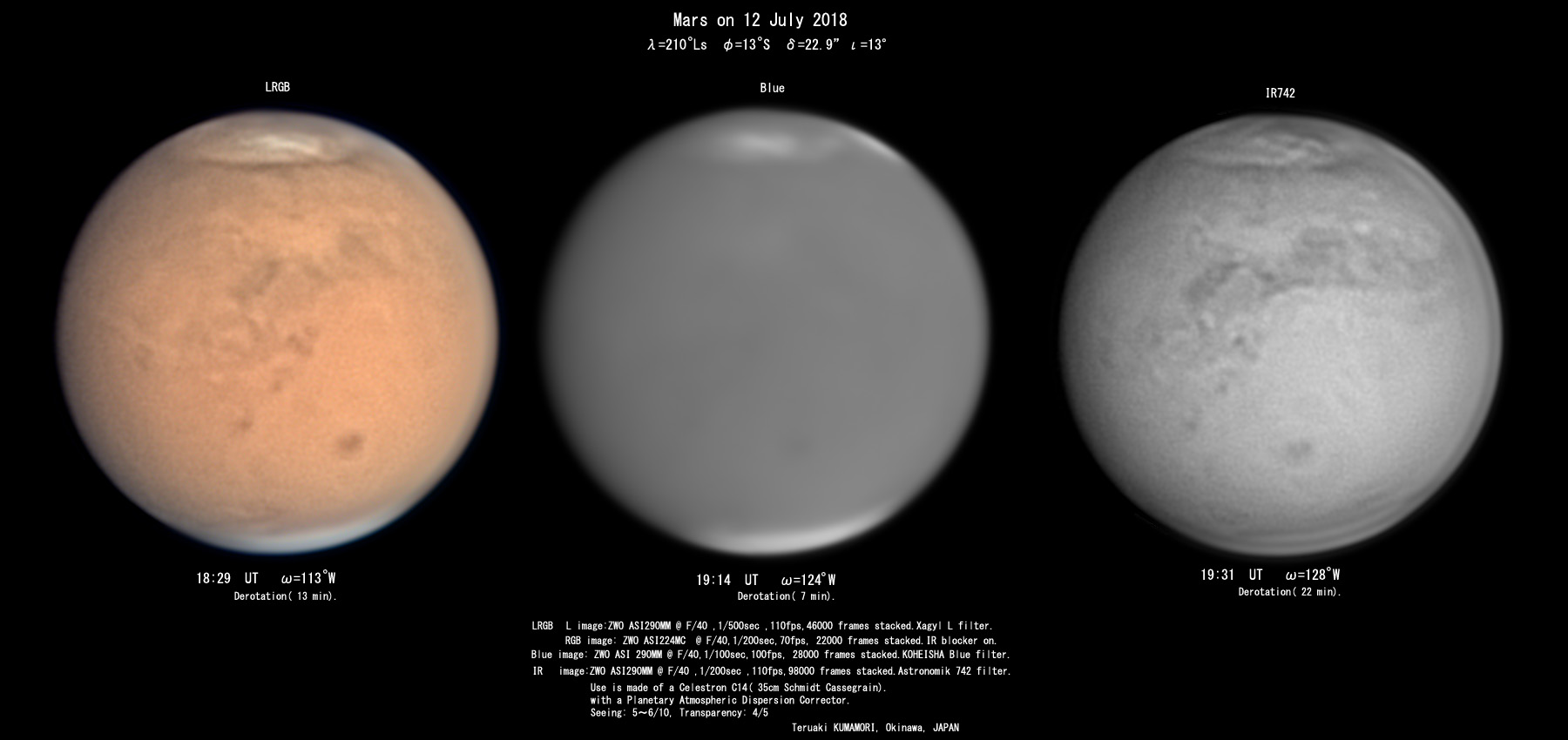 ≪大阪府堺市 熊森照明≫[Teruaki Kumamori:Ohsaka Japan]
≪大阪府堺市 熊森照明≫[Teruaki Kumamori:Ohsaka Japan]
Some correct seeing this morning. The dust still hasn't moved since the day before.
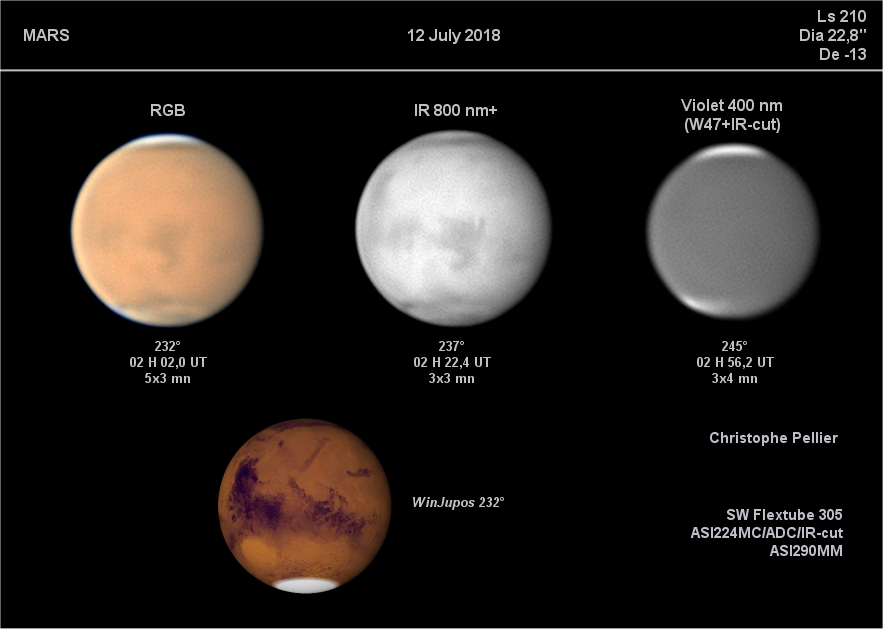 [Christophe Pellier Bruz City,France]
[Christophe Pellier Bruz City,France]
Remote imaging session using 1 m telescope in Chile (Chilescope). Good seeing conditions (6-7/10).
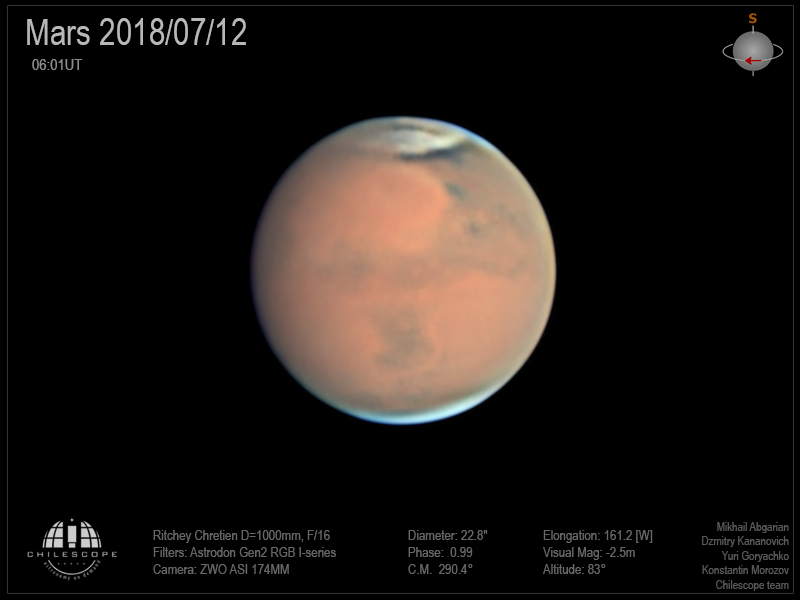 [Dzmitry G.Kananovich,Minsk,Belarus]
[Dzmitry G.Kananovich,Minsk,Belarus]
Two similar images with the Tyrrhenum region on the CM.
That from the 14th was captured at only 13〓 alt.,but seeing was better. Mars is now nearly full.
In previous images I wasn’t getting the axial orientation exactly vertical.
I’ve found the method in WinJUPOS of correcting that now (Recording: Image Measurement:
Adjustment: Outline Frame: Rotate outline frame as if image were captured to Equatorial system).
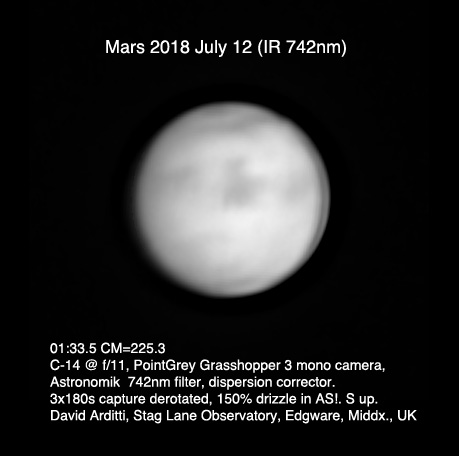
 [David Arditti: Edgware Middlesex HA8 5LW: United Kingdom]
[David Arditti: Edgware Middlesex HA8 5LW: United Kingdom]
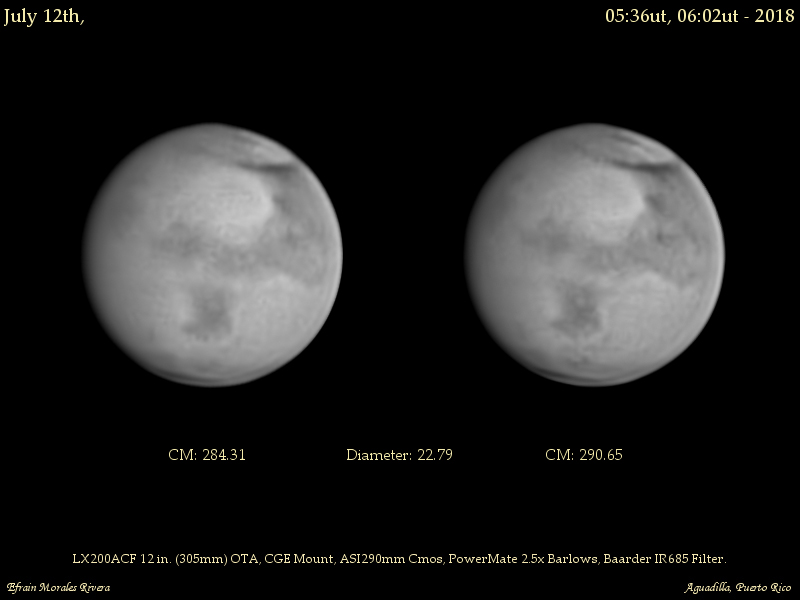
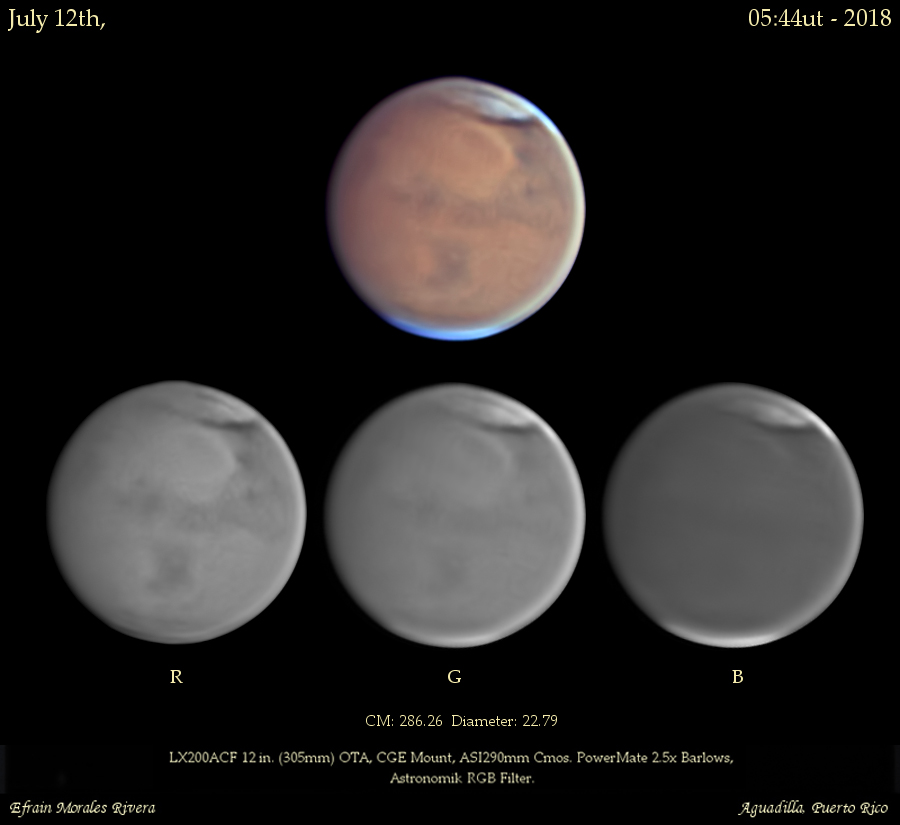 [Efrain Morales Rivera Aguadilla:Puerto Rico]
[Efrain Morales Rivera Aguadilla:Puerto Rico]

 [Luis Amiama Gomez : [Santo Domingo,Dominican Republic]
[Luis Amiama Gomez : [Santo Domingo,Dominican Republic] [Tomigusuku city Okinawa Japan]
≪沖縄県 豊見城市 大田 聡≫
[Tomigusuku city Okinawa Japan]
≪沖縄県 豊見城市 大田 聡≫ [Anthony Wesley,Murrumbateman Australia]
≪アンソニ オーストラリア≫
[Anthony Wesley,Murrumbateman Australia]
≪アンソニ オーストラリア≫ [Clyde Foster:Centurion,South Africa]
[Clyde Foster:Centurion,South Africa]
 ≪大阪府堺市 熊森照明≫[Teruaki Kumamori:Ohsaka Japan]
≪大阪府堺市 熊森照明≫[Teruaki Kumamori:Ohsaka Japan] [Christophe Pellier Bruz City,France]
[Christophe Pellier Bruz City,France] [Dzmitry G.Kananovich,Minsk,Belarus]
[Dzmitry G.Kananovich,Minsk,Belarus]
 [David Arditti: Edgware Middlesex HA8 5LW: United Kingdom]
[David Arditti: Edgware Middlesex HA8 5LW: United Kingdom]
 [Efrain Morales Rivera Aguadilla:Puerto Rico]
[Efrain Morales Rivera Aguadilla:Puerto Rico] ALPO-Japan Latest
ALPO-Japan Latest